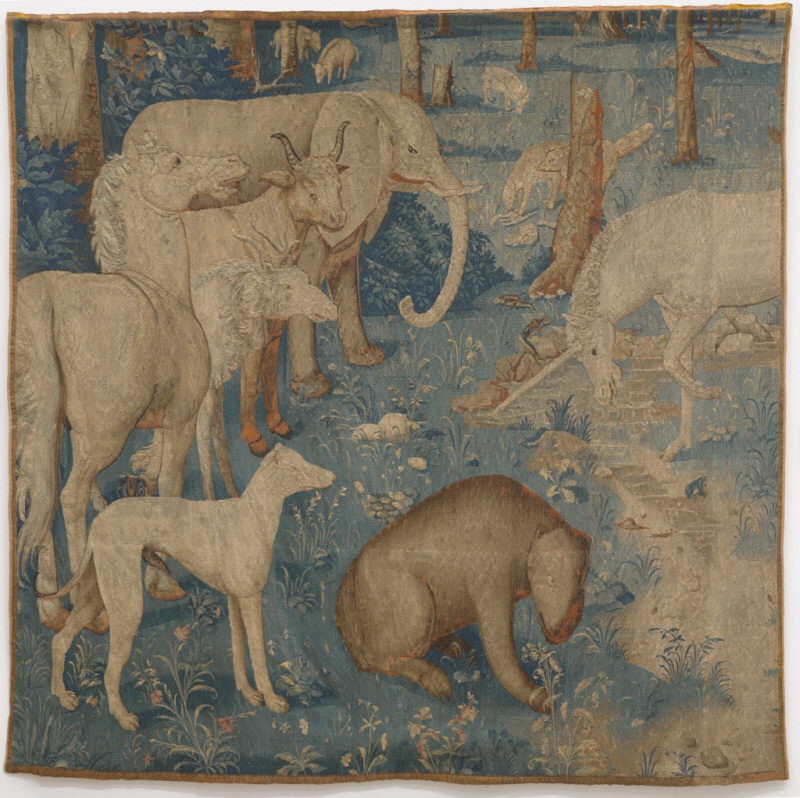Originally wider, this tapestry panel was cropped at some point, possibly to remove areas of damage at the textile’s edges. It was most likely produced in a workshop in Paris or Brussels and depicts a group of animals gathered in a verdant forest. They all attentively observe a white unicorn as he dips his horn into a stream. Among the animals represented—a dog, a horse, a goat or ram, a tapir, a frog, lizards, and other reptiles—the elephant and the unicorn carry the image’s symbolic weight.
In the 15th century, the image of a unicorn dipping its horn into water was commonly understood as an act of purification. Because legends told of their mystical power to cleanse the impure, and because in such narratives they were frequently targets of persecution, unicorns came to represent Christianity, or even Christ himself. At the time, elephants from Africa or Asia were known to Europeans and prized for their size, strength, and exotic origins. An isolated image of an elephant could therefore convey multiple political and religious connotations. Elephants pictured in the presence of unicorns, however, refer to European myths in which the animals battle one another, usually with the unicorn prevailing. In this fragment, the fierce expression of the elephant suggests the potential violence of an encounter with his magical foe. This panel was likely one in a narrative series that depicted earlier and later events surrounding the supernatural powers of the unicorn, the great strength of the elephant, and/or the theme of the hunt.
